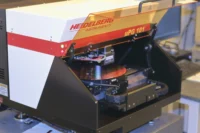- Home
- Articles
- Architectural Portfolio
- Architectral Presentation
- Inspirational Stories
- Architecture News
- Visualization
- BIM Industry
- Facade Design
- Parametric Design
- Career
- Landscape Architecture
- Construction
- Artificial Intelligence
- Sketching
- Design Softwares
- Diagrams
- Writing
- Architectural Tips
- Sustainability
- Courses
- Concept
- Technology
- History & Heritage
- Future of Architecture
- Guides & How-To
- Art & Culture
- Projects
- Interior Design
- Competitions
- Jobs
- Store
- Tools
- More
- Home
- Articles
- Architectural Portfolio
- Architectral Presentation
- Inspirational Stories
- Architecture News
- Visualization
- BIM Industry
- Facade Design
- Parametric Design
- Career
- Landscape Architecture
- Construction
- Artificial Intelligence
- Sketching
- Design Softwares
- Diagrams
- Writing
- Architectural Tips
- Sustainability
- Courses
- Concept
- Technology
- History & Heritage
- Future of Architecture
- Guides & How-To
- Art & Culture
- Projects
- Interior Design
- Competitions
- Jobs
- Store
- Tools
- More
How Breakers Help Maintain System Selectivity and Fault Coordination

Have you ever wondered how electrical systems continue running smoothly even when a fault occurs somewhere in the network? The secret lies in precise system selectivity and fault coordination — two crucial aspects of modern electrical design that ensure only the affected part of a circuit shuts down, keeping the rest of the system operational.
In an age where reliability is non-negotiable, ensuring your electrical infrastructure is properly protected is essential. This is where CHINT breakers play a vital role — engineered to provide intelligent protection, fast response, and maximum selectivity. Whether you’re managing an industrial facility, commercial complex, or home system, understanding how breakers contribute to system coordination can help you prevent downtime and improve overall safety.
Table of Contents
ToggleWhat Is System Selectivity
System selectivity, also known as discrimination, is the principle that ensures only the circuit breaker closest to a fault trips, while the rest of the system continues operating normally. Without selectivity, even a small short circuit could shut down an entire building or production line.
Why it matters:
- Reduces downtime: Only the affected section is isolated.
- Prevents cascading failures: Avoids multiple breakers tripping simultaneously.
- Improves safety: Ensures energy is contained to the fault area.
- Increases operational continuity: Keeps critical loads powered even during minor faults.
Example:
Consider a manufacturing plant with multiple machines connected to a main distribution panel. If a fault occurs in one machine’s circuit, only that breaker should trip — not the entire panel. This keeps other machines running and production uninterrupted.
System selectivity is thus essential for efficiency, safety, and reliability in both residential and industrial environments.

How Breakers Support Selectivity and Fault Coordination
High-quality circuit breakers are at the heart of effective selectivity. CHINT breakers, in particular, are designed with advanced trip units, communication capabilities, and customizable settings to ensure precise coordination and quick response times.
Intelligent Time–Current Characteristics
Every breaker has a time–current curve — a graph showing how quickly it responds to different fault currents. These breakers feature adjustable time delays and current thresholds, enabling you to coordinate their operation with upstream and downstream devices.
This flexibility allows:
- Fine-tuned coordination between breakers in series.
- Reduced nuisance tripping, ensuring only actual faults trigger disconnection.
- Enhanced reliability, especially in complex power networks.
These adjustable characteristics make it an ideal choice for both new installations and retrofit upgrades.
Fault Coordination Through Smart Engineering
Fault coordination refers to how protection devices interact during a short circuit or overload. Proper coordination ensures that when a fault occurs, breakers trip in a predictable sequence — starting from the point nearest to the fault.
CHINT’s range of Miniature Circuit Breakers (MCBs) and Molded Case Circuit Breakers (MCCBs) is designed to handle this sequence flawlessly. Their superior short-circuit ratings, built-in communication modules, and precision trip mechanisms help maintain proper coordination across system levels.
Benefits include:
- Faster fault isolation
- Enhanced equipment protection
- Reduced maintenance time
- Greater operator confidence
For facilities with layered electrical distribution, these features can dramatically improve uptime and safety.
Zone Selective Interlocking (ZSI) — The Smart Protection Layer
Some of the advanced breaker models include Zone Selective Interlocking (ZSI) — a modern technology that allows breakers to communicate and coordinate in real time. When a downstream breaker detects a fault, it signals the upstream breaker to delay its trip, ensuring that only the closest breaker operates.

Key advantages of ZSI:
- Minimized fault clearing time — reducing arc flash energy.
- Better selectivity without compromising speed.
- Reduced system stress and longer equipment lifespan.
ZSI is especially valuable in industrial plants, data centers, and hospitals — environments where uptime and protection are equally critical.
Coordination with Protective Relays and Smart Systems
In larger systems, protective relays and breakers must work together seamlessly. These breakers integrate easily into relay-based and digital protection schemes, enhancing fault detection and coordination accuracy.
Through smart communication protocols and digital trip units, these breakers can share real-time fault data with control systems — enabling predictive maintenance and faster troubleshooting.
Practical benefits:
- Faster restoration after faults.
- Lower maintenance costs.
- Improved monitoring and reporting for facility managers.
By combining smart relays and advanced breakers, you can build a protection system that’s both intelligent and dependable.
Practical Applications: Real-World Scenarios
| System Type | Coordination Goal | How Breakers Help |
| Residential | Prevent full-home outages from local faults. | MCBs isolate faults in individual circuits, ensuring continuous power in unaffected areas. |
| Commercial | Maintain business continuity during localized faults. | MCCBs with adjustable trip settings enhance selectivity and prevent widespread interruptions. |
| Industrial | Keep operations stable despite electrical disturbances. | ZSI-enabled breakers provide fast fault clearance and high coordination accuracy. |
Best Practices for Maintaining System Selectivity

Achieving and maintaining system selectivity requires careful planning and regular verification. Here are some best practices to help ensure reliable protection:
- Conduct Protection Coordination Studies
Use simulation software to plot breaker time–current curves and verify selectivity margins. Update studies whenever loads or configurations change. - Use Compatible Components
Always pair breakers, fuses, and relays that have compatible characteristics. CHINT breakers, for instance, are designed for seamless integration within coordinated protection networks. - Perform Periodic Testing
Breakers and protective relays should be tested regularly to ensure they operate within their intended parameters. Over time, wear or environmental factors can affect performance. - Keep Documentation and Settings Updated
Record all breaker settings, test results, and coordination curves. Up-to-date documentation helps engineers troubleshoot and maintain compliance with standards. - Train Personnel
Ensure maintenance teams understand selectivity principles and can interpret coordination studies effectively.
Implementing these practices, along with reliable equipment such as CHINT breakers, helps create an electrical system that operates safely and efficiently for years to come.
Why Reliable Breakers Matter in a Modern World
The growing complexity of electrical networks — with renewable integration, automation, and smart monitoring — demands smarter protection devices. In such systems, the cost of downtime or equipment damage can be enormous.
Reliable breakers, such as those produced by CHINT, ensure precise coordination and fault isolation, preserving uptime and preventing cascading failures. Their robust design, adjustable parameters, and digital intelligence make them indispensable in maintaining both electrical safety and business continuity.
Conclusion
Maintaining system selectivity and fault coordination isn’t just an engineering detail; it’s a fundamental requirement for any safe, efficient electrical network. When properly coordinated, breakers ensure that faults are isolated quickly and selectively — protecting equipment, minimizing downtime, and keeping operations running smoothly.
By integrating high-quality devices like breakers, you equip your electrical systems with intelligent protection, precise coordination, and long-term reliability. From residential setups to industrial power networks, innovative breaker solutions help ensure that power interruptions become rare, controlled, and manageable. In the end, effective selectivity saves more than circuits — it safeguards your entire operation.
illustrarch is your daily dose of architecture. Leading community designed for all lovers of illustration and #drawing.
Submit your architectural projects
Follow these steps for submission your project. Submission FormLatest Posts
Are Organic Bamboo Sheets Worth the Investment?
When it comes to getting a good night’s sleep, the quality of...
A Beginner’s Guide to Architectural Details
Architectural details explained for beginners: clear terms, key joints, proportions, climate-smart specs,...
5 Must-Visit Structures by Norman Foster
Explore five must-visit structures by Norman Foster, showcasing iconic works that combine...
What Are The Benefits Of Professional Painting For Homes?
Fresh paint does more than change color on a wall. It protects...












Leave a comment